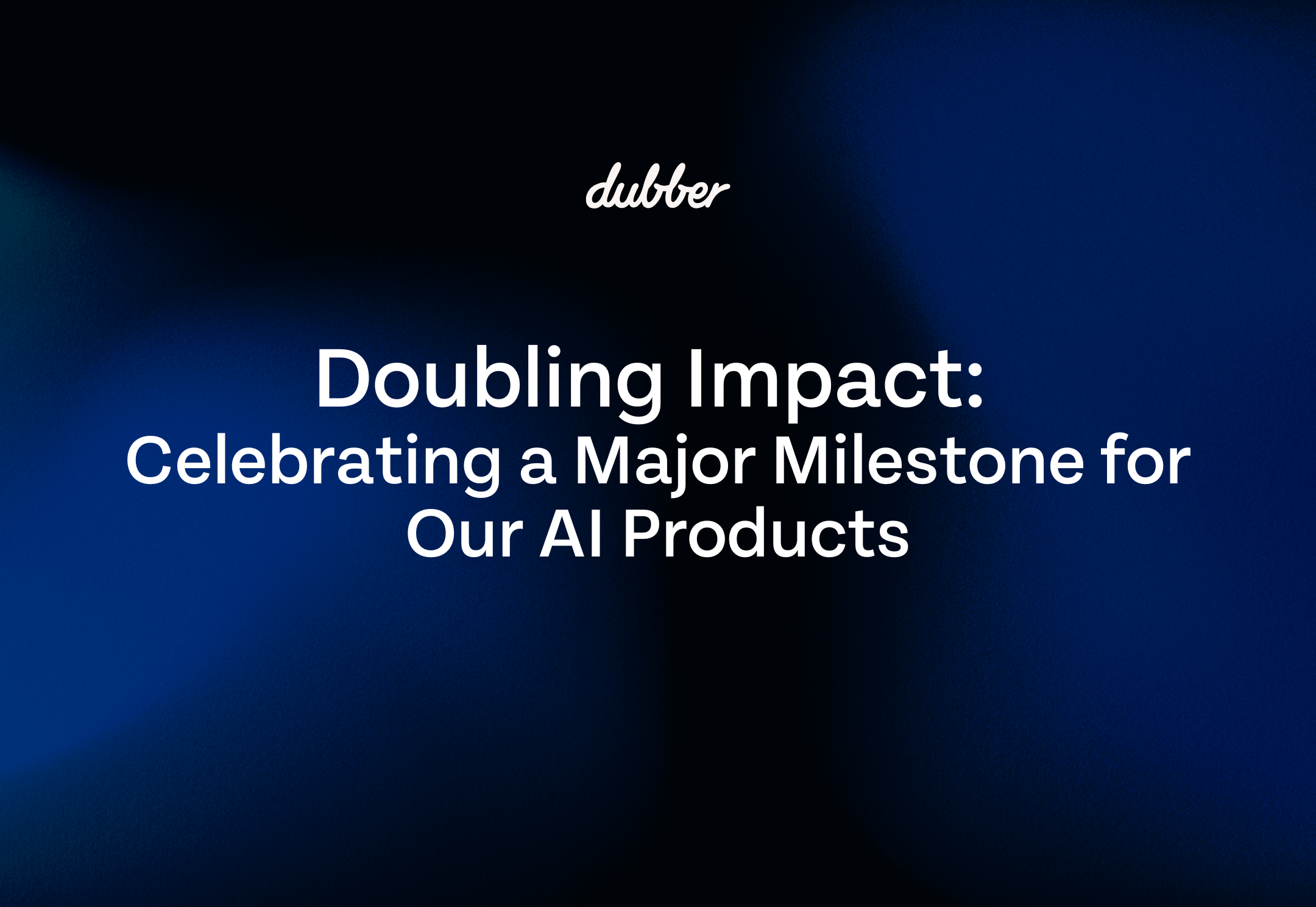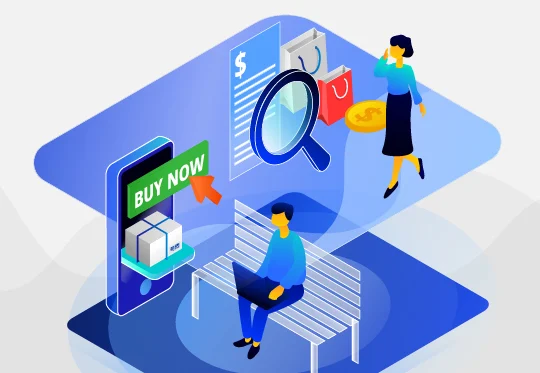
The fourth instalment of our Fourth Industrial Revolution series explores the evolving expectations of customers and how digital experiences will change over time. Part one of the series introduced the Fourth Industrial Revolution, part two examined intuitive networks and the future of cloud and 5G technology within the telecommunications industry, and part three investigated how telecommunications service providers will need to diversify their offerings in order to stand out from the competition.
Customer expectations have evolved alongside the development of technology, as businesses digitally enhance the customer experience. The high quality service and convenience afforded by technology is now seen as standard by consumers, who are demanding personalised services on demand. They are also expecting a seamless experience across channels, with hassle-free payment and deployment options.
Customer expectations within telecommunications
The telecommunications industry is plagued by customer churn and the costs associated with acquiring new customers. Encouraging customer loyalty is a great way to increase revenue, so telecommunications service providers will need to look for new and innovative ways to retain customers. This may require service providers to reassessing the expectations of their customers and developing digital tools in order to better support the customer journey at every stage and enhance their overall experience.
Telecommunications service providers are well placed to deliver personalised products and services to their users chiefly due to the amount of data they have. New technologies will enable companies to deliver these at scales previously impossible or unimaginable. Smart algorithms will be able to analyse customer data in real time to deliver personalised products and services to entire customer bases at once. We are already seeing this customisation with TV streaming services that learn from user behaviour. In the future, this personalisation will be automatically created using artificial intelligence, and a mix of predictive analytics and real time data.
Customer service is key
Peer recommendations are becoming increasingly important in the decision-making process, even more so than media product reviews. Negative reviews tend to reach a larger audience than positive reviews, meaning high quality products and excellent customer service are more important than ever. 61% of customers switched providers due to disappointing customer service, according to a recent study by Accenture.
Personalised experiences have been shown to engage customers, and the telecommunications industry should be asking how it can deliver such experiences to all users. This could be customising bandwidth supply according to a user’s individual data usage to meet a particular price point, or through the delivery of digital services and applications that have been personalised to each user such as telecommunications or utility providers offering plans to customers based on their usage. Reactivity and agility will be important qualities in the race to keep up with an evolving digital environment and changing customer expectations.
An improved and efficient customer experience
Digital tools will not only help telecommunications service providers to create personalised customer experiences, they can also help to reduce costs and grow revenue. Increased customer engagement reduces churn1; lowering the need for hefty spend on customer acquisition and marketing. Targeted offers including cross selling and/or bundling that appeal to the specific needs of customers should increase customer revenue and loyalty.
Customers expect to be able to find the information they need to make an informed decision when purchasing a new product or service. With more intelligent business communications solutions, customers should be directed to the department or information they need faster — increasing first call resolution and reducing customer service costs. This is significant when customer service can account for up to 10% of total operating costs. A report by the World Economic Forum has predicted that such a reduction in customer services and marketing costs, and the associated IT expenditure, could generate up to $18 billion in additional operating profits by 2025.
In the fifth and final part of our Fourth Industrial Revolution series we will explore what telecommunication service providers need to do in order to provide for the new digital workforce.
1 Del Rowe, S. (2019) ‘Vertafore Ensures Great CX with NewVoiceMedia’, Customer Relationship Management, June, p34.
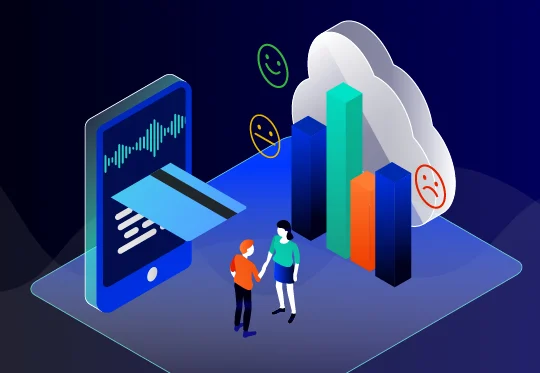
Our September quarter was a period characterised by growth: with expansion across sales, and new roles filled in Australia, Europe and North America across marketing; development; compliance; and support. This enhancement of the team will be instrumental in meeting our current priorities: providing call recording and voice AI (artificial intelligence) services for the Cisco Webex Calling platform, driving growth of mobile call recording in Australia, furthering our USA expansion with tier one carriers, rolling out a global artificial intelligence initiative, and continuing to develop our global distribution and reseller network.
Our key highlights for the period:
- Revenue increased by 6% from the previous quarter to $2.15m, up 200% on the previous corresponding period (PCP).
- End user subscriptions increased by 23% to over 117 000, up 165% on the PCP.
- 113 agreements were made with service providers and 52 service providers reached billing stage.
- Contracted annualised recurring revenue at 30th September was $10.2m.
- Cisco Webex calling launched Dubber as their recording service 31st October.
We are strongly positioned to expand on our leadership in cloud call recording and data capture in traditional unified communication networks, fixed-mobile converged networks, and UCaaS networks.
Cisco Webex Calling
Cisco Webex Calling is a multi-tenant, cloud-based alternative to an on-premise PBX, and is available as a subscription service. In preparation, we achieved ISO 27001 compliance: a globally recognised standard for information security management systems. The service is now live and will be available via the Cisco order entry system.
Mobile and ‘whole of business’ recording
Businesses are now looking beyond call recording for compliance, and seeking mobile recording services and insights on customer interactions across the whole business. We are working towards a service that will provide widespread availability across Australia. During this preparation we have completed an agreement with Schepisi Communications and have been awarded the Telstra Enterprise Mobility Carriage Partner of the Year for 2019.
Continued momentum
Dubber co-founder and CEO Steve McGovern commented on the September quarter results:
“Fundamentally, we have scaled our operations from a ‘Founder led’ company to one which is able to execute on the opportunities which are in multiple jurisdictions.
We are pleased with our momentum towards facilitating widespread uptake of the Dubber platform as a mobile or fixed mobile converged offering. The Company believes that there is significant immediate demand for these services and activation of the initiatives should see user uptake and revenues grow strongly.
Our AI programs are continuing to gain momentum with our large partners like IBM. We are seeing strong increases in the number of enterprise customers, particularly in North America, that are interested in garnering business insights. We believe that gaining access to real-time voice calls on an enterprise-wide basis will be a strong business driver for us in 2020.
Throughout the remainder of FY20 we will continue to procure additional key carrier agreements, accelerate their time to billing and add new channel and systems integrator agreements to build out the global backbone of call recording. These are the foundations of growth for the next term and we are now ready to execute on these with the team we have in place.”
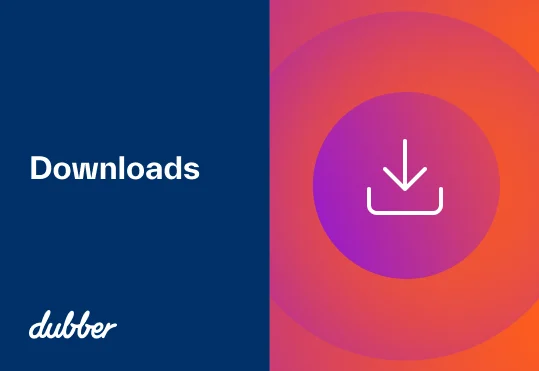
Dubber Live as Cisco Webex Calling Call Recording Platform

The digital workforce is an increasing reality for enterprises, and now is the time to move from on-premise unified communications solutions to cloud-based UCaaS. Future cloud unified communications offerings will have enhanced features, including dashboards and analytics.
No more being tied down
According to Gartner, by 2021 90% of IT leaders will not purchase new on-premise unified communications infrastructure1. With UCaaS solutions providing the same, or better, functionality; such as voice, meeting and messaging services, as well as unified clients and integrations, the only change is the delivery method. Cloud deployments of communications services removes the need for on-premise equipment, and the associated investment of time and money required.
Our call recording and voice AI services are designed to integrate with UCaaS solutions, while our cloud platform has been specifically architectured in order to provide secure, scalable storage that is flexible enough to adapt to the needs of an enterprise.
Digital transformation and disruption
Moving to the cloud is a huge step on the journey to digital transformation. By removing the restrictions of physical hardware, enterprises increase their potential to disrupt their industries and expand their horizons. Cloud communications enable expansion; not just in size, but also in location. Cloud storage can scale alongside the growth of an organisation, with no worries of ever running out of space, while deployment through global data centres means new locations can be added easily.
The cloud also facilitates agility: with a faster speed of innovation, businesses are able to quickly react to trends and capitalise on new opportunities with faster deployment of communication services.
Relief from app overload
With our open API, data from recorded calls can be integrated into business tools. It’s even possible to manage our services through existing systems, meaning one less application open on a desktop. Visit our API page to find further information on what our API can do.
If you want to learn more about how a move to the cloud can help your business get ahead of the competition, get in touch with one of our team.
Sources
1Gartner (2018) Magic Quadrant for Unified Communications as a Service Worldwide.

The third part of our Fourth Industrial Revolution series investigates the ways in which telecommunications service providers will expand their offering beyond phone calls. Part one was an introduction to the Fourth Industrial Revolution, describing the latest wave of digital development; and part two explored intuitive networks and the ways in which cloud technology and 5G will transform telecommunications.
Telecommunications service providers have already adapted to changing consumer demand, adjusting their revenue streams in order to succeed in an evolving marketplace. Data has been important, and a further shift to an internet-based business model will be an opportunity for future revenue growth through the currency of data. The internet of things (IoT) will be a key part of this strategy, with the deployment of sensors, and the potential of analytics and machine a significant revenue opportunity.
New revenue streams
How we work and communicate will be shaped by forward-thinking service providers who provide new services at a low connection cost. Telecommunications service providers are at a significant advantage, due to their existing connectivity and subscriber base. More subscribers mean more data, and those with the analytical capabilities will be able to harness the value held within this data. The telecommunications operators who will succeed will be those with expanded offerings that include cloud-based services such as analytics, system integrations, and APIs that can compete in a crowded marketplace. Their competition will be technology companies and agile startups, so innovation will be key. Service providers will need to ensure that they are not held back by legacy processes, as quick reactions will be vital. Radical change may be in order at board and CEO levels to capitalise on the huge potential for revenue.
Possible areas for development by telecommunications service providers include video and entertainment services, on-demand information services such as maps or booking, retail, mobile financial services, and virtual care provision services for healthcare providers. It is predicted that these new revenue streams could generate up to $142 billion over the next decade and could contribute 15% of total revenue by 2025. New opportunities will also be available in existing spheres covered by telecommunication service providers, such as information security, enterprise mobility management, unified communications, cloud services, and analytics. These areas on their own could contribute an additional $48 billion in profits for network operators and equipment suppliers. These new revenue streams will also create new jobs in order to support service delivery across consumer and enterprise applications.
Disrupting the industry
In order to meet new consumer demand and cement their place in the market, telecommunications service providers will need to recruit digitally-minded workers with implementation knowledge who can drive innovation. Competition will be fierce, and it is predicted that acquisitions and partnerships will be key to driving growth and establishing a place in the market. Scalability will be key for platforms, as well as the integration of front and back end systems, in order to offer a range of products and services to consumers.
With existing infrastructure already in place, telecommunications service providers are well-placed to offer a range of technology-based services to compete with digital service providers. This infrastructure will allow them to disrupt other industries. In a recent survey across global operators, almost a quarter of companies reported that they expect digital services across consumer and enterprise applications to account for more than 25% of total revenues by 2020. The development of new services that are relevant to users will improve customer service, a desirable outcome considering even a 0.5-1% reduction in churn annually has the potential to generate up to $10.3 billion over the next decade. By prioritising customer convenience and value creation, service providers could drive up to $170 billion through time and cost savings for their customers
Environmental impact
The potential travel reduction brought about by these new digital services could see a decrease in carbon emissions of more than 80 million tonnes. Virtual healthcare alone could reduce emissions by 63 million tonnes by allowing patients to speak to doctors in the comfort of their own homes.
Emerging technologies
Technological developments such as augmented reality (AR) and virtual reality (VR) have the potential to change how we communicate with not just each other but the world around us. They could even herald new devices. By 2030, the PC will be 50-years-old and the smartphone almost 15: the future could hold new communication devices and see a move away from screens. A focus on emerging technologies can capture significant value. AR and VR could reshape the ways we receive medical care or go shopping, and confidence in these technologies is already strong, with funding deals for AR and VR reaching $1.1 billion as far back as 2016. Applications of these technologies will be much more varied than their existing use in gaming, with a variety of commercial and industrial applications including healthcare, retail, logistics, real estate, manufacturing, security, training, and data analysis. AR and VR have the potential to evolve how people communicate, learn, work, and consume.
In the fourth part of our Fourth Industrial Revolution series we will explore the future of customer retention; looking at the evolving expectations of customers and the ways in which digital experiences will change over time.
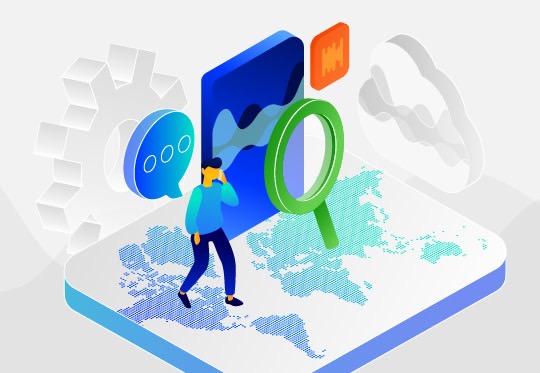
Our cloud storage sets us apart from other call recording service providers by offering a scalable platform for growing businesses. As a native cloud call recording solution, we offer a range of storage options to adapt to the needs of service providers and their customers. We built the Dubber platform in the cloud to offer unlimited scalability to our customers. What does this mean in practice?
Flexible options
Scalability offered by the cloud provides flexible approaches to user counts, processing capacity, and storage. Combined, these allow us to provide products and plans tailor-made for service providers.
Perpetual retention
A common challenge for on-premise solutions is that their sizing was undertaken at time of installation. As a business grows in both users and usage, a challenge can arise where the volume of daily new call recordings is beyond prediction. This forces administrators to balance which services are being recorded and the length of time to retain each recording.
This approach to retention is just not adequate in the real world, especially when regulations such as MiFID II require calls to be stored for five years. The Dubber platform has the capability to securely store large volumes of calls in perpetuity, giving organisations the tools they need to comply with the regulations of their industry.
SaaS
Our Software-as-a-Service model allows us to offer a range of subscription options to telecommunications service providers and their customers. Want to cover call recording for compliance and contact centres but also offer packages with less commitment that introduce a whole new customer base to the benefits of call recording? Dubber has you covered. We offer low-cost and commitment-free packages with shorter storage periods that can be supplied alongside standard reserved call recording packages that require perpetual storage.
Unrestricted storage
As well as long-term options, the Dubber platform can also accommodate large call volumes. The unrestricted storage provided by the cloud allows for vast numbers of concurrent calls to be recorded. Dubber’s true cloud storage allows the solution to scale alongside a business during busy periods, and there are never any concerns about running out of space. Calls are always available instantly and are easily searchable.
Security
Dubber is a native cloud platform, with an architecture specifically designed to provide maximum security for the recording data of all our users. The Dubber platform utilises sophisticated security systems, leveraging cutting edge cloud technologies to provide a highly secure and scalable call recording solution. All data is stored within our platform under AES-256 bit encryption, providing best-in-class security. The platform offers true cloud multi-tenancy architecture, ensuring separation of all customer data.
Get in touch to find out how the Dubber solution can scale to suit your business, contact us here.

June 2019 Appendix 4G

The second part of our Fourth Industrial Revolution series explores how networks are expected to evolve in the future. You can read our introduction to the Fourth Industrial Revolution here.
Telecommunication networks are vast physical structures that perform diverse functionality in a way that must conform to regulatory restrictions. The industry is constantly adapting to developments in technology and evolving business models and the rate of change that they must keep up with is increasing.
Cloud technology
Advances in digital and cloud capabilities are expected to transform networks, moving away from expensive hardware to innovative software that can increase reliability and flexibility. These software solutions will have API-based interfaces and will be deployable across affordable, general-purpose hardware platforms. Cloud technology, such as software-defined networking (SDN) and network function virtualisation (NFV) are leading this network evolution, as they allow telecommunication service providers to manipulate the network on demand.
AT&T are pioneering the adoption of SDN and NFV, setting a target of 75% of the AT&T network based on SDN and NFV technologies by 2020. It is expected that other carriers will follow AT&T’s lead and that SDN and NFV could be worth a total of $220 billion for network operators and equipment providers over the next decade. At Cox Communications, Executive Director of Advanced Technology Jeff Finkelstein said the proliferation of IoT connectivity will continue to drive cable network demand, which is increasing at an annual rate of 53 percent. He sees the only way to manage that growth is to capitalize on technologies including SDN and NFV.
Cloud technologies applied to network infrastructure will allow network operators to reduce their spending, particularly on energy. This could result in a positive change for the environment, with a switch to new technologies predicted to save more than 180 million tonnes of potential CO2 emissions.
5G
The 5G network is key to the Fourth Industrial Revolution. Already being rolled out to certain cities and locations such as Gatwick airport in the UK, 5G uses high-frequency radio spectrum but will need lower band airwaves outside of urban areas. Service providers will need to ensure that they can provide the network across the spectrum in order to reach a larger market. 5G is characterised by low-latency: meaning there is minimal delay in the processing of data. This allows it to support operations that require near real-time access to rapidly changing data. 5G will allow the commercialisation of technology such as the internet of things, virtual and augmented reality and autonomous transportation, as well as evolving industries from television broadcasting to agriculture.
Intuitive networks
Understanding network workloads and how to allocate infrastructure accordingly is another way in which networks will be transformed. As networking evolves, machine learning technologies have the potential to create networks that are self-sufficient. This technology would mean that networks could identify errors and issues and fix problems before they affect communications. These intuitive networks will be able to automatically adjust bandwidth provisions depending on requirements.
Driven by artificial intelligence, intuitive networks collect data from points throughout the network; including end user smartphones, switches, WAN routers and cloud servers. This data can be used to understand how the network is being used, giving network engineers the information they need to do their job more efficiently.
Evolved networks will make provisioning quicker and easier, with agile delivery allowing staff more time to work on other advancements as less time is required to be spent on routine network management. Networks will also have much greater scalability; meeting traffic demands as they fluctuate over time. With intuitive networks, business continuity and disaster recovery are also improved. As networks are able to identify issues, traffic can be rerouted in order to reduce downtime, reducing customer churn due to increased satisfaction through more consistent levels of service.
Dubber’s native cloud products have been designed to take their place in the Fourth Industrial Revolution. Built natively in the cloud, Dubber solutions are already offering the cost and energy saving benefits of a software-as-a-service model. With no on-premise equipment the costs of running server rooms, as well as the energy consumption associated with powering them, are removed. By eliminating the hardware requirements of legacy solutions, we are able to offer a service that can scale to meet demand: without restrictions. In this way, our platform is prepared for a future where communications solutions automatically scale depending on requirements.
In part three of the Fourth Industrial Revolution series we’ll look at the world of communications beyond phone calls and the new digital communication methods and extended revenue streams that will be available in the future.

The Fourth Industrial Revolution is a wave of digital development that encompasses our physical surroundings. Where the First Industrial Revolution used steam power to transform manufacturing and travel, the Second used electric power to enable mass-production, and the Third used technology to automate processes, the Fourth uses emerging technology including artificial intelligence (AI), robotics, the Internet of Things (IoT), 3D printing, nanotechnology, biotechnology, and quantum computing.
This series will give a general overview of the Fourth Industrial Revolution, with future pieces discussing what this will mean for networks, telecommunications, customer service, and the workforce.
The Fourth Industrial Revolution and business
The Fourth Industrial Revolution has the potential to generate income and improve quality of life through new products and services that increase efficiency and make our lives easier. It is predicted that logistics and global supply chains will improve, reducing the cost of transportation and communication and the overall cost of trade: resulting in new markets and economic growth.
Market disruption will be driven by agile players who can offer better quality, experience, speed, or price options thanks to improvements in technology. We have already seen how technology is creating new ways to consume goods and services via smartphones. The Fourth Industrial Revolution will affect customer expectations, as well as product and business development.
Artificial intelligence
AI is fast becoming a part of everyday life. Self-driving cars are being developed, while drones and virtual assistants are now commonplace. AI technology is being driven by the availability of vast amounts of data, something that has fuelled the development of our own AI technology. We developed Dubber AI to allow everyone, not just big businesses, to gain insight from their calls, and ultimately make their lives easier. With AI, businesses can identify common problems and resolve complaints to improve customer loyalty, while people in their everyday lives can use call transcripts to remember important details. Other technology companies, such as IBM, are using AI to improve everything from healthcare to Wimbledon.
Telecommunications developments
The telecommunications industry will be at the forefront of the Fourth Industrial Revolution, as a driver of global digital transformation. Investment in technology and interoperability has enabled the flow of data and the creation of new business models across industries. A globally connected network empowers millions of people around the world by giving them access to information and marketplaces.
Data will soon become a commodity such as electricity and telecommunications service providers will need to create an offering that prioritises customer experience in order to succeed. They are uniquely placed to offer a personalised customer experience that extends revenue streams beyond connectivity, through integrated IoT solutions and new communications technologies that leverage developments in augmented and virtual reality. Networks will also evolve from on-premise equipment to an era of software systems.
Competitive advantage will be achieved through the ability to collect data and create new outcomes or experiences for end users. Telecommunications service providers who offer enterprises a variety of data-driven use cases will add value to their offerings and ultimately their customers. 2020 sees 44 zettabytes (44 trillion GB) of annual data flow, 40% of which will be stored or processed in the cloud.
In part two of the Fourth Industrial Revolution series we’ll look at how intuitive networks will create value for customers through flexible services, faster routes to market, and improved user experience.
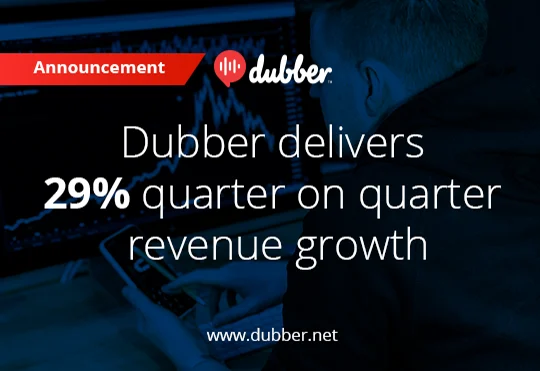
Following April’s capital raise of $22m, we have utilised this investment to scale the business in order to pursue growth potential. Cash at bank as of 30th June 2019 was $19.6m, with the company fully funded to execute these opportunities. The leadership team has been expanded, and the service has now launched with Spark New Zealand and Bell Canada. Key metrics for the June quarter include:
- Revenue increased 29% from $1.57m to $2.03m, with annual operating revenue increasing 269% from $1.5m to $5.54m
- Telecommunications service providers at the billing stage increased to 106, from 36 in June 2018
- Subscribers increased 222% to 94 825 over the year from 29 405, with 21 668 added in the June quarter
Commercial opportunities
Market conditions, customer and partner requirements, and the continued growth in cloud voice and data services has enabled Dubber to consolidate our position in the market. During the June quarter we have focused on scaling to capitalise on commercial opportunities and we have grown our sales team in order to procure network agreements and generate revenue across Australia, North America, and Europe. In order to support our channels, including IBM and Cisco/BroadSoft, we have increased resources to expand our reach with these organisations. Our AI development has continued with the enablement of third party integrations, including CRM systems and trading platforms, and other value added services for telecommunications service providers.
New staff
In order to strategically target growth opportunities around the world we have expanded our team, particularly in technology development, sales, account management, and application development. We have added 14 new staff members, including a director of global sales, a strategic partnership manager and a channel sales director for ANZ.
Service provider launches
In June, the Dubber service went live with Spark New Zealand on their Cloud Phone Service. Spark (formerly known as Telecom New Zealand) is one of New Zealand’s largest telecommunications and IT service providers. Shortly after the June quarter, Dubber also went live with Bell Canada, providing call recording to its Bell Total Connect Service. Bell Canada is the largest communications company in Canada. Customer subscriber numbers are expected to be reflected in the current quarter and beyond.
Continuing to build the global backbone of call recording
Dubber co-founder and CEO Steve McGovern commented on the June quarter results:
“Our service provider and technology partnership agreements represent some of the world’s largest telecommunications service providers and global technology sales channels. With a technology that is designed to meet large scale requirements, the business itself is in a position to scale to capitalise on the opportunities available to it.
“We have seen an acceleration of large enterprise customers moving quickly towards adopting AI in their operations (and thereby call recording), particularly in Australia and the USA. There have also been extensive developments in the cloud voice and collaboration markets in the last quarter that we believe will have a profound impact on the way voice and related services will be delivered to end customers.
“The Company’s short-term goals are unchanged – we will continue to procure additional key carrier agreements to build out the global backbone of call recording, to grow revenues on a quarterly basis, and to be cash flow positive on a monthly basis this calendar year end.”

